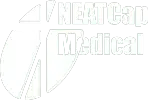NICU Noise and Neonatal Development
N1. http://www.who.int/news-room/fact-sheets/detail/preterm-birth.
N2. A. Leech, W.O. Cooper, E. McNeer, T.A. Scott, S.W. Patrick. Neonatal Abstinence Syndrome In The United States, 2004–16, Health Affairs 39 (2020) 764-767. https://doi.org/10.1377/hlthaff.2019.00814
N3. NICHD Neonatal Research Network (NRN): Extremely Preterm Birth Outcome Data. http://www.nichd.nih.gov/about/org/der/banches/ppd/programs/epbo/pages/epbo_case.aspx?start=17;31;31.
N4. S.N. Graven, J.V. Browne. Sensory development in the fetus, neonate, and infant: Introduction and overview. Newborn & Infant Nursing Reviews, 8 (2008) 169-172. https://doi.org/10.1053/j.nainr.2008.10.007
N5. G. Brown. NICU Noise. Neonatal Netw. 28 (2008) 165–173. https://doi.org/10.1891/0730-0832.28.3.165
N6. American Academy of Pediatrics, Committee on Environmental Health. Noise: a hazard for the fetus and newborn. Pediatrics. 100 (1997) 724-727. https://doi.org/10.1542/peds.100.4.724
N7. J.G. Long, J.F. Lucey, A.G.S. Philip. Noise and Hypoxemia in the Intensive Care Nursery. Pediatrics 65 (1980) 143-145.
N8. E.M. Wachman, A. Lahav. The effects of noise on preterm infants in the NICU. Arch. Dis. Child. Fetal Neonatal Ed. 96 (2011) 305–310. https://doi.org/10.1136/adc.2009.182014.
N9. P. Bremmer, J.F. Byers, E. Kiehl, Noise and the premature infant: physiological effects and practice implications. J. Obstet. Gynecol. Neonatal Nurs. 32 (2003) 447–454. https://doi.org/10.1177/0884217503255009.
N10. M.G. Monsén, U.M. Edéll-Gustafsson. Noise and sleep disturbance factors before and after implementation of a behavioural modification programme/ Intensive Crit. Care Nurs. 21 (2005) 208–219. https://doi.org/10.1016/j.iccn.2004.12.002.
N11. N.H. Peng, J. Bachman, R. Jenkins, C.H. Chen, Y.C. Chang, Y.S. Chang, T.M. Wang. Relationships between environmental stressors and stress biobehavioral responses of preterm infants in NICU. Adv. Neonatal Care. 13 (2013) S2-S10. https://doi.org/10.1097/ANC.0000000000000023.
N12. A. Salavitabar, K.K. Haidet, C.S. Adkins, E.J. Susman, C. Palmer, H. Storm. Preterm infants’ sympathetic arousal and associated behavioral responses to sound stimuli in the neonatal intensive care unit. Adv. Neonatal Care. 10 (2010) 158–166. https://doi.org/10.1097/ANC.0b013e3181dd6dea.
N13. E. Zimmerman, K. Keunen, M. Norton, A. Lahav. Weight gain velocity in very low-birth-weight infants: Effects of exposure to biological maternal sounds. Am. J. Perinatol. 30 (2013) 863–870. https://doi.org/10.1055/s-0033-1333669.
N14. S.N. Graven, The full-term and premature newborn: Sound and the developing infant in the NICU: Conclusions and recommendations for care. J. Perinatol. 20 (2000) S88–S93. https://doi.org/10.1080/19338244.2017.1304883.
N15. American Academy of Pediatrics (2002). Guidelines for Perinatal Care (5th Ed.). Elk Grove Village, IL: American Academy of Pediatrics.
N16. R.G. Pineda, J. Neil, D. Dierker, C.D. Smyser, M. Wallendorf, H. Kidokoro, L. Reynolds, S. Walker, C. Rogers, A.M. Mathur, D.C. Van Essen, T. Inder. Alterations in Brain Structure and Neurodevelopmental Outcome in Preterm Infants Hospitalized in Different Neonatal Intensive Care Unit Environments. J Pediatrics, 164 (2014) 52-60. https://doi.org/10.1016/j.jpeds.2013.08.047.
N17. N.P. Hardy, Cost and Design Analyses of Neonatal Intensive Care Units: Comparing Single Family Room, Double-occupancy, Open-bay, and Combination Setting for Best Design Practices (Unpublished Masters thesis), University of Florida, 2005.
N18. S.W. Smith, A.J. Ortmann, W.W. Clark. Noise in the Neonatal Intensive Care Unit: A New Approach to Examining Acoustic Events. Noise Health 20 (2018) 121-130. https://doi.org/10.4103/nah.NAH_53_17
N18. K.J. Gerhardt, R.M. Abrams. Fetal Exposures to Sound and Vibroacoustic Stimulation. J. Perinatol. 20 (2000) S20-S29. https://doi.org/10.1038/sj.jp.7200446
N19. K.J. Gerhardt, R.M. Abrams, C.C. Oliver. Sound environment of the fetal sheep. Am. J. Obstet. Gynecol. 162 (1990) 282–287. https://doi.org/10.1016/0002-9378(90)90866-6.
N20. J.L. Darbyshire, M. Müller-Trapet, J. Cheer, F.M. Fazi, J.D. Young. Mapping sources of noise in an intensive care unit. Anaesthesia. 74 (2019) 1018–1025. https://doi.org/10.1111/anae.14690.
N21. G. Albertini, S. Giaquinto, M. Mignano. Spectral analysis of the human voice: A potentially useful tool in rehabilitation. Eur. J. Phys. Rehabil. Med. 45 (2009) 537–545.
N22. A.T. Catlett, D. Holditch-Davis. Environmental stimulation of the acutely ill premature infant: Physiological effects and nursing implications. Neonatal Netw. 8 (1990) 19–26.
N23. V. Bertelle, a Sevestre, K. Laou-Hap, M.C. Nagahapitiye, J. Sizun. Sleep in the neonatal intensive care unit. J. Perinat. Neonatal Nurs. 21 (2007) 140–150. https://doi.org/10.1097/01.JPN.0000270631.96864.d3.
N24. K.A. Allen, Promoting and protecting infant sleep. Adv. Neonatal Care. 12 (2012) 288–291. https://doi.org/10.1097/ANC.0b013e3182653899.
N25. O. Weisman, R. Magori-Cohen, Y. Louzoun, A. Eidelman, R. Feldman. Sleep-wake transitions in premature neonates predict early development. Pediatrics. 128 (2011) 706–714. https://doi.org/10.1542/peds.2011-0047
Ear Plug and Ear Muff Studies
E1. S. D’Agati, S. The effects of a sound-modified environment on physiological variables in premature infants in neonatal intensive care. (1995) ProQuest ETD Collection for FIU. AAI9531642. http://digitalcommons.fiu.edu/dissertations/AAI9531642.
E2. R. Abujarir, H. Salama, W. Greer, M. Al Thani, F. Vlisda. The Impact of Earmuffs on Vital Signs in a Neonatal Intensive Care Unit. J. Neonatal. Perinatal. Med. 5 (2012) 249–259. https://doi.org/10.3233/NPM-2012-57511
E3. Z. Abdeyazdan, S. Ghassemi, M. Marofi. The effects of earmuff on physiologic and motor responses in premature infants admitted in neonatal intensive care unit. Iranian Journal of Nursing and Midwifery Research. 19 (2004) 107-112.
E4. L.K. Zahr, J. De Traversay. Premature infant responses to noise reduction by earmuffs: Effects on behavioral and physiologic measures. J Perinatol. 15 (1995) 448-455.
E5. R. Duran, N.A. Ciftdemir, U.V. Ozbek, U. Berberoglu, F. Durankus, N. Sut, B. Acunas. The effects of noise reduction be earmuffs on the physiologic and behavioral responses in very low birth weight premature infants. Int J Pediatr Otorhinolaryngology. 76 (2012) 1490–1493. https://doi.org/10.1016/j.ijporl.2012.07.001
E6. Z. Abdeyazdan, S. Ghasemi, M. Marofi, N. Berjis. Motor Responses and Weight Gaining in Neonates through Use of Two Methods of Earmuff and Receiving Silence in NICU. The Scientific World Journal (2014) Article ID 864780, 5 pages, http://dx.doi.org/10.1155/2014/864780.
E7. C.A. Turk, A.L. Williams, R.E. Lasky. A randomized clinical trial evaluating silicone earplugs for very low birth weight newborns in intensive care. J Perinatol. 29 (2009) 358-363. https://doi.org/10.1038/jp.2008.236
E8. Clinicaltrials.gov Report #NCT02744066.
E9. M.J. Balsan, J. Burns, F. Kimock, E. Hirsch, A. Unger, R. Telesco, E. Bloch-Salisbury. A pilot study to assess the safety, efficacy and ease of use of a novel hearing protection device for hospitalized neonates. Early Human Devel. 156 (2021) 015365. DOI: https://doi.org/10.1016/j.earlhumdev.2021.105365
E10. E. Bloch-Salisbury, L McKenna, E. Boland, D Chin. Assessment of a hearing protection device on infant sleep in the neonatal intensive care unit. J. Sleep Res. 32 (2023) 1-5. DOI: https://doi.org/10.1111/jsr.13610
E11. A. Unger. NICU Noise: 50 Years of Worry, and We’re Finally Getting Somewhere! Neonatal_Int_Care 35 (2022) 1, 30-32.
E12. A. Unger. More Effort Needed to Protect Neonatal Intensive Care Patients from Noise. Neonatal Int. Care 35 (2022) 3, 37-38.
E13. N. H. Beluk, V. K. Lee, F. G. Shellock, Magnetic Resonance Imaging Evaluation of a Hearing Protector Device Designed for Neonatal Patients. J. Radiology Nursing. 41 (2022) 193-200. https://doi.org/10.1016/j.jradnu.2022.04.004
E14. D. Penoyer, G. B. Martinez, L. Lowman. Outcomes from Novel Hearing Protective Device for Neonates Exposed to Noise during Critical Care Transportation. Neonatal_Int_Care 36 (2023) 36-38.
E15. D. Penoyer, G. B. Martinez, L. Lowman. Outcomes from Novel Hearing Protective Device for Neonates Exposed to Noise during Critical Care Transportation. Critical Care Medicine 51(1) 352, January 2023. DOI: https://doi.org/10.1097/01.ccm.0000908628.73865.1b
Transport Noise
T1. K. Karlsen, M. Trautman, W. Price-Douglas, S. Smith. National Survey of Neonatal Transport Teams in United States. Pediatrics 128 (2011) 685-691. www.pediatrics.org/cgi/doi/10.1542/peds.2010-3796
T2. L. Buckland, N. Austin, A. Jackson. Excessive exposure of sick neonates to sound during transport, Arch Dis Child Fetal Neonatal Ed. (2003) 88m, F513-F516. https://doi.org/10.1136%2Ffn.88.6.F513
T3. S.E. Sittig, J.C. Nesbitt, D.A. Krageschmidt, S.C. Sobczak, R.V. Johnson. Noise levels in a neonatal transport incubator in medically configured aircraft, Int J Pediatric Otorhinolaryngology. 75 (2011), 74-76. https://doi.org/10.1016/j.ijporl.2010.10.012
T4. J.L. Johnson, Evaluation of noise levels experienced by medically fragile neonates during emergency helicopter transport. Independent Studies and Capstones. (2011) Paper 625. Program in Audiology and Communication Sciences, Washington University School of Medicine.
T5. B.M. Karlsson, M. Lindkvist, W. Karlsson, R. Lundstrom, S. Hakansson, U. Wiklund, J. van den Berg. Sound and Vibration: effects on infants’ heart rate and heart rate variability during neonatal transport. Acta Paediatrica. 101 (2012) 148-154. https://doi.org/10.1111/j.1651-2227.2011.02472.x
T6. A. Macnab, Y. Chen, F. Gagnon, B. Bora, C. Laszlo. Vibration and noise in pediatric emergency transport vehicles: a potential cause of morbidity? Aviat. Space Environ. Med. 66 (1995) 212-219.
T7. IEC 6060 1-2-20. 2nd ed. Medical electrical equipment Part 2-20: Particular requirements for the basic safety and essential performance of infant transport incubators. Geneva: International Electrochemical Commission, 2009.
MRI Noise
M1. S. Tocchio, B. Kline-Fath, E. Kanal, V.J. Schmithorst, A. Panigrahy. MRI Evaluation and Safety in the Developing Brain. Semin Perinatol. 39 (2015) 73–104. https://doi.org/10.1053/j.semperi.2015.01.002
M2. J.A. Tkach, Y. Li, R.G. Pratt, K.A. Baroch, W. Loew, B.R. Daniels, R.O. Giaqunito, S.L. Merhar, B.M. Kline-Fath, C.L. Dumoulin. Characterization of acoustic Noise in a neonatal intensive care unit MRI system. Pediatr Radiol. 44 (2014) 1011-1019. https://doi.org/10.1007/s00247-014-2909-0
M3. M.K. Philbin, K.H. Taber, L.A. Hayman. Preliminary report: changes in vital signs of term newborns during MR. AJNR Am J Neuroradiol. 17 (1996) 1033-1036.
M4. K.H. Taber, L.A. Hayman, S. Robert Northrup, L. Maturi. Vital sign changes during infant magnetic resonance examinations. J Magn Reson Imaging. 8 (1998) 1252-1256. https://doi.org/10.1002/jmri.1880080612
M5. J.A. Tkach, S.L. Merhar, B.M. Kline-Fath, R.G. Pratt, W.M. Loew, B.R. Daniels, R.O. Giaqunito, M.S. Rattan, B.V. Jones, M.D. Taylor, J. M Tiefermann, L.M. Tully, E.C. Murphy, R. N. Wolf-Severs, A.A Laruffa, C.L. Dumoulin. MRI in the Neonatal ICU: Initial Experience Using a Small-Footprint 1.5-T System. Am J Radiol. 202 (2014) W95-W105. https://doi.org/10.2214/AJR.13.10613
M6. F.G. Shellock. Reference Manual for Magnetic Resonance Safety, Implants, and Devices, 2020 Edition. Biomedical Research Publishing Group, Los Angeles, CA, 2020.
M7. K. Muto, K. Yagi, K. Eguchi, S. Ito. Measurement of MRI device noise level in frequency domain.8th International Congress on Acoustics 2004, IV2579-IV2582.
M8. N.K. Antonov, C.B. Ruzal-Shapiro, K..D Morel, W.S. Millar, S.. Kashyap, C.T. Lauren, M.C. Garzon. Feed and Wrap MRI Technique in Infants. Clinical Pediatrics. 56 (2017) 1095-1103. doi: 10.1177/0009922816677806
M9. L.B. Templeton, M.J. Norton, E.J. Goenaga-Díaz, D.H. McLaughlin, M.E. Zapadka, T.W. Templeton. Experience with a Feed and Swaddle program in infants up to six months of age. Acta Anaesthesiol. Scand. 64 (2020) 63-68. doi: 10.1111/aas.
NEATCAP Patents
P1. F.M. Kimock, Z. Rambo, B.J. Kimock, A. Unger, E.G. Thear, G.H. Thear, Medical Headgear, US Pat. 10,413,696, Sept. 17, 2019.
P2. P2. F.M. Kimock, Z. Rambo, E.G. Thear, G.H. Thear, J.J. Whalen III, Medical Headgear, US Pat. 11,185,447,
Nov. 30, 2021.
P3. F.M Kimock, Z. Rambo, E.G. Thear, Medical Headgear, US Pat. Appl. 16/887,847 filed May 27, 2020. (Pub. No. US 2020/0289325A1)

